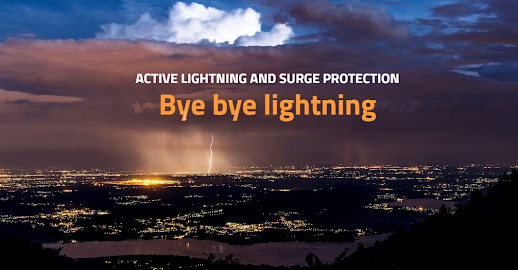Insurance Requirements and Lightning Protection Systems
A lightning protection system is an essential safety feature designed to protect structures, equipment, and lives from the destructive effects of lightning strikes. It functions by providing a controlled path for the electrical energy from a lightning strike to safely travel to the ground, thus minimizing damage and preventing fires or electrical surges. As lightning is a naturally occurring and unpredictable force, having a comprehensive protection system in place is critical for any building, especially in regions prone to thunderstorms.
The primary purpose of a lightning protection system is to intercept a lightning strike and redirect the current through conductors to the earth where it dissipates harmlessly. Without such a system, lightning may strike the highest point of a structure home lightning protection cause fires, explosions, or severe electrical failures. This can lead to catastrophic property damage and even pose serious risks to human safety. Given the immense power and high voltage involved in lightning, protecting a structure effectively involves understanding both the science of lightning and the engineering principles behind the system.
A standard lightning protection system typically includes several main components. The first is the air terminal, often referred to as a lightning rod, which is mounted on the highest points of a building. These terminals are designed to attract lightning before it can strike other parts of the structure. Connected to these terminals are down conductors, which are cables that provide a low-resistance path for the lightning current to follow. These conductors lead directly to ground electrodes, also called grounding systems, which disperse the electrical charge safely into the earth.
Grounding is arguably the most important part of the lightning protection system. Even if a structure captures the lightning strike and conducts it downward, without a proper grounding system the energy may still cause damage by arcing, heating, or building up voltages in undesirable places. Effective grounding requires materials with high conductivity and good contact with the soil to allow for quick dissipation of the charge. In some installations, ground rings or multiple grounding rods are used to enhance performance and safety.
Another component often integrated into lightning protection systems is surge protection. Surge protective devices are installed on electrical panels and key pieces of equipment to guard against transient overvoltage that can result from nearby lightning strikes. These devices help to prevent damage to sensitive electronics and ensure the continued functionality of communication systems, power supplies, and other critical infrastructure.
The installation of a lightning protection system must follow established standards and best practices to ensure it performs effectively. Organizations such as the National Fire Protection Association and the International Electrotechnical Commission have published detailed guidelines and codes that outline proper design, material selection, and installation techniques. These standards take into account factors such as building height, construction materials, surrounding environment, and soil resistivity to design a customized protection approach for each structure.
Lightning protection is not only important for tall buildings or skyscrapers. Smaller structures, residential homes, barns, communication towers, and even trees can benefit from protection, especially in lightning-prone regions. In industrial settings where explosive or flammable materials are present, the risk of fire from a lightning strike can be particularly high. Therefore, many local building codes and insurance requirements mandate lightning protection in such environments.
Modern advancements in lightning protection technology have introduced innovations such as early streamer emission systems and charge transfer systems. These methods aim to modify the conditions that lead to a lightning strike or to increase the likelihood that the system intercepts the strike before it can reach other vulnerable parts of the structure. While these systems are more complex and often more costly, they can offer enhanced performance in certain applications.
Maintenance and periodic inspection of a lightning protection system are also vital. Over time, weathering, corrosion, or physical damage may impair the performance of the system. Routine checks ensure that all components are securely connected, corrosion-free, and functioning as intended. Any modifications to the structure, such as roof extensions or new equipment installations, may also necessitate updates to the system.
In conclusion, a lightning protection system is a crucial investment for ensuring the safety and integrity of buildings and infrastructure. It serves as a defense mechanism against one of nature’s most powerful forces, offering peace of mind to property owners and occupants. By combining properly installed air terminals, conductors, grounding, and surge protection, these systems play a vital role in minimizing the risks associated with lightning and safeguarding people and property alike.
.jpeg)

Comments
Post a Comment